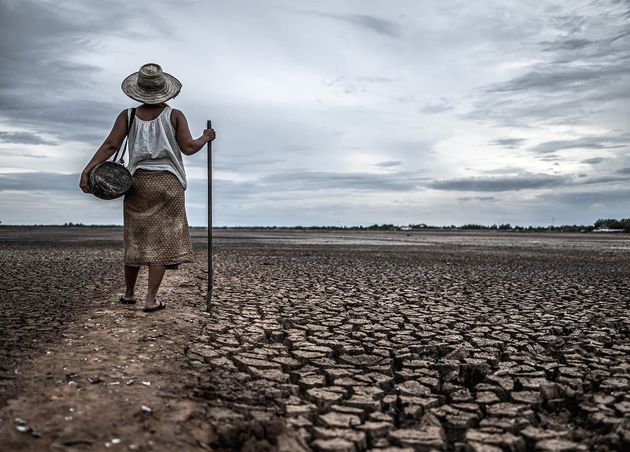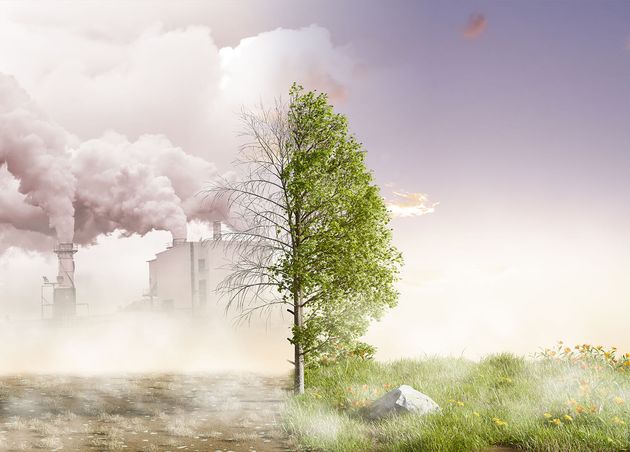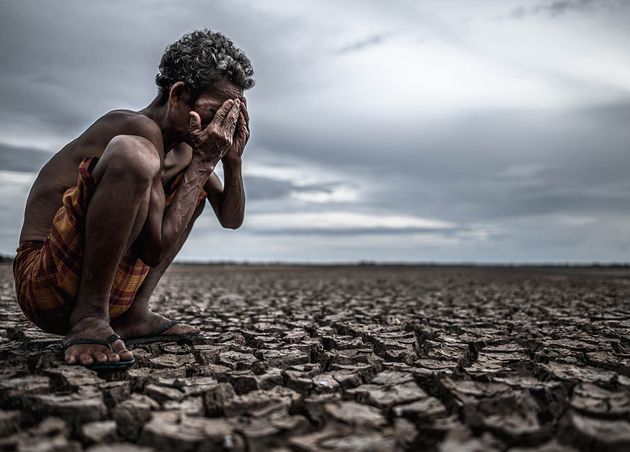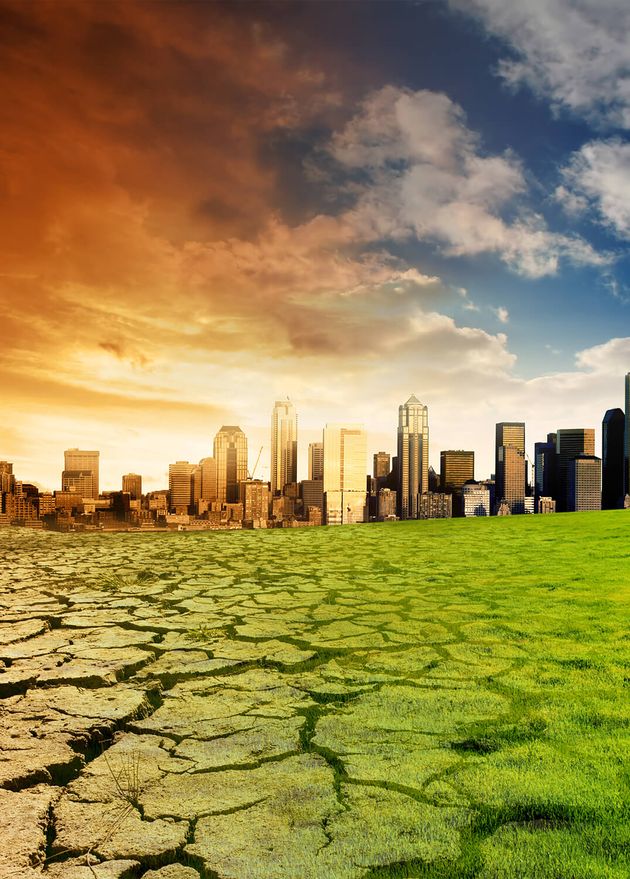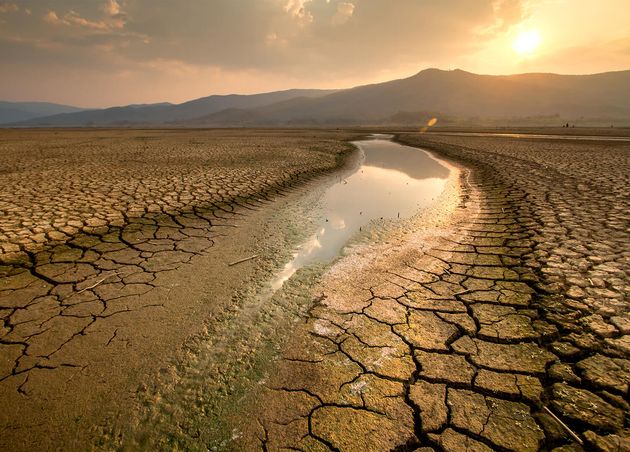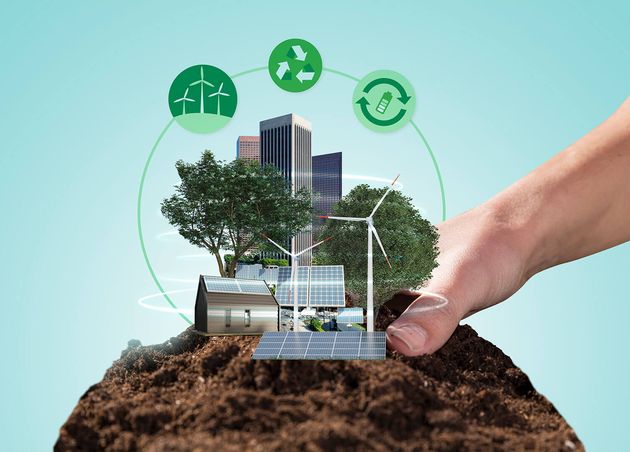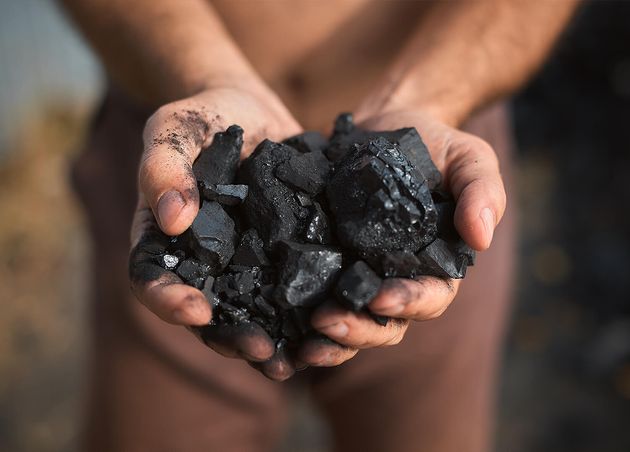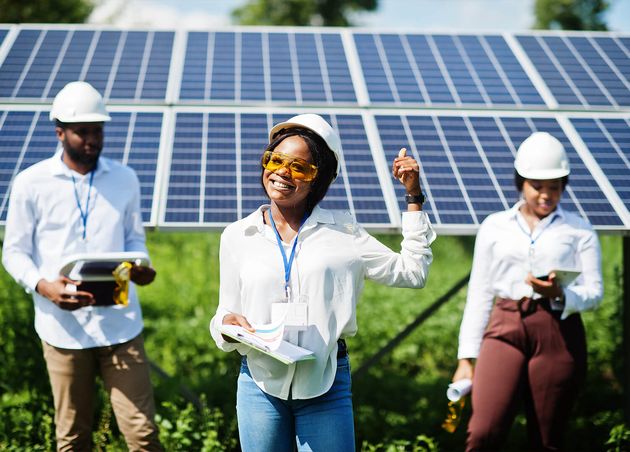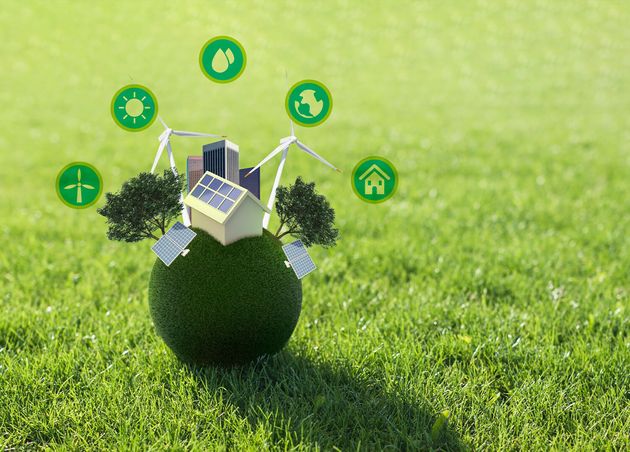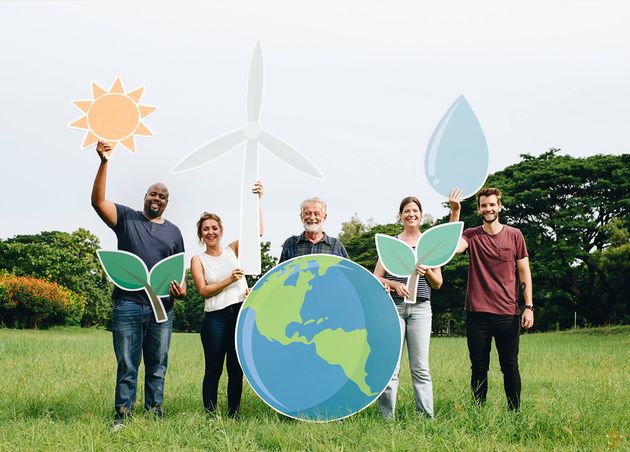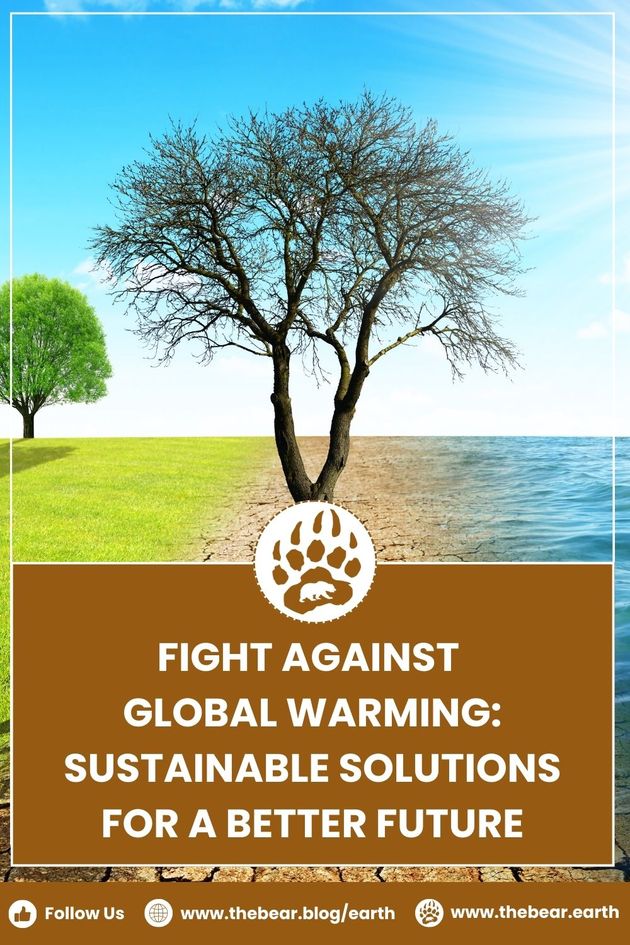Fight Against Global Warming: Sustainable Solutions for a Better Future
Today, global warming is a well-known occurrence. Over millions of years, the Earth's climate has changed naturally, ranging from ice ages to warm eras. However, the Earth's temperature has risen alarmingly throughout the last century. To be precise, the temperature has risen by 1.2 to 1.5 degrees Fahrenheit. Studies show that human activities have significantly affected this unusual temperature rise.
The widespread use of various fossil fuels like coal, oil, and natural gas became prevalent during the Industrial Revolution, and it is often considered a significant contributor to the issue of global warming.
Since the industrial revolution, power plants, industries, and vehicles have been burning these fossil fuels, emitting vast greenhouse gasses. It is a natural phenomenon that creates the greenhouse effect, which causes global warming. Organizations are standing up against the factors affecting Global Warming and struggling to reduce it.
So, what are the main causes leading to global warming at present? How to reduce it? We will present all this information in the following paragraphs in a long and straightforward manner. Come with us to be nourished with knowledge about the Earth's future.
🌏 Eco Fact!
Due to global warming, glaciers and ice caps are melting. Due to this, the water level of the ocean is rising. It may have long-term harmful consequences for the environment.
What is the Greenhouse Effect?
It would be helpful to grasp the greenhouse effect to comprehend global warming. The atmosphere comprises several gasses, including carbon dioxide, nitrous oxide, and methane. These gases are referred to collectively as the greenhouse gases. These gasses are beneficial if they are in sufficient quantities in the atmosphere.
The gasses produced by greenhouses produce a circular layer that naturally wraps around the Earth. The Earth absorbs some of the sun's rays as they strike its outer layer. However, the vast majority of them return to the environment.
The greenhouse gases absorb warmth from the sun's rays in the atmosphere above. Some of the heat escapes into space. The heat collected by greenhouse gases is dispersed in all directions. The absorbed heat contributes to the Earth's warmth.
This indicates that these gasses are necessary for the existence and survivability of all living species on Earth, including animals, plants, and people. Humans can live freely ever after, thanks to the greenhouse effect.
What is Global Warming?
Now that we've grasped the greenhouse effect, let's look at global warming. We've seen that the Earth has a natural equilibrium of greenhouse gases. However, the unfortunate reality is that people are meddling with the equilibrium of greenhouse gases daily.
Global warming is a climate change phenomenon defined by an overall rise in average global temperatures, which alters weather patterns and environments over time. It is directly related to an increase of greenhouse gases in the environment, which worsens the greenhouse effect.
As per studies, the average global temperature has increased by approximately 0.8 degrees Celsius since the late 19th century. At the current carbon dioxide emissions rate, experts predict an average temperature of 1.5°C to 5.3°C by 2100. If nothing is done, the repercussions for humans and the planet will be disastrous.
Global Warming Causes
The greenhouse effect occurs naturally. However, the rise in greenhouse gasses may be traced back to human activity. It is, therefore, not surprising that the world's top climate researchers think that human activities have been the primary driver of warming the planet since the middle of the twentieth century.
- Fossil Fuels
- The excessive use of fossil fuels is the first driver of warming the planet, as burning coal, oil, and gas emits carbon dioxide and nitrous oxide.
- Deforestation
- Forest exploitation has a significant impact on climate change.
- Trees aid in climate regulation by absorbing carbon dioxide from the surrounding air.
- This beneficial impact disappears when trees are chopped down.
- Intensive Farming
- Another contributor to temperature rise is intensive farming, which includes increased numbers of cattle and crop protection products and fertilizers.
- Waste Disposal
- Waste management practices such as landfills and burning waste emit greenhouse and hazardous gasses, including methane, into the environment, soil, and rivers, increasing the greenhouse effect's rise.
- Mining
- The quarrying and metalworking industries are vital to modern living.
- However, this market accounts for more than 5% of total emissions of greenhouse gasses from extraction to distribution of raw material and processed products.
- Overconsumption
- Overconsumption contributes significantly to climate change.
- Indeed, it is to blame for the excessive use of natural resources and emissions from the international freight movement, both contributing to warming the planet.
Global Warming Effects
Some of the implications outlined in the United Nations Framework Convention on Climate Change Special Report for Global Warming are as follows:
- On Biodiversity
- The temperature rises, and climate change disrupts ecological systems, altering the circumstances and rhythms of plant growth. Lack of resources and climate change alter animal life patterns and migration cycles.
- We are already seeing the extinction of numerous species, including endemic species, and the invasion of invasive species that harm crops and other creatures. As a result, global warming affects biodiversity. The balance of biodiversity is being altered and endangered.
- On Oceans
- Due to the effect of global warming, permafrost, glaciers, and ice caps are melting rapidly in the poles, rising sea levels at an unprecedented rate. The growth over a century reached 18 cm. The most catastrophic scenario is a 1m increase by 2100.
- Ocean acidification is also a significant source of worry. Indeed, the high amount of carbon dioxide absorbed by the oceans causes them to become more acidic, raising severe concerns regarding the resilience of seashells and coral reefs.
- On Humans
- Climate change is having an impact on the worldwide economy. It is already upsetting economic, medical, and geopolitical balances across the planet. The scarcity of resources, such as food and energy, causes new conflicts to emerge.
- Rising sea levels and floods are exacerbating population movement. Small island states are at the forefront of the conflict. Climate refugees are expected to reach 250 million by 2050.
- On the Weather
- For decades, scientists and climate researchers worldwide have been investigating the influence of rising temperatures on weather patterns.
- The consequences are massive: more significant droughts and heatwaves, more precipitation, more natural disasters like hurricanes and floods, severe weather and fires in forests, a more extended frost-free season, and so on.
The Best Global Warming Solutions
Our world is in crisis, as you've undoubtedly heard: glaciers are disappearing, sea levels are increasing, and wildfires, storms, and heat waves are growing increasingly dangerous. To determine the most influential global warming remedies, we investigated the actions that greatly influence the most severe causes.
There is no one answer to the problem of global warming, which is caused mainly by an excess of heat-trapping carbon dioxide, methane, and nitrous oxide in the environment. The methods and tactics mentioned below are all required to reduce greenhouse gas emissions.
#1 Reforestation
According to some recent studies presented during the meeting at the AAAS, or what we know as the American Association for the Advancement of Science, reforestation is the best and most economical approach to avoid global warming.
Because trees absorb carbon dioxide, planting more trees can help lower the quantity of carbon in the atmosphere. Simply allowing all trees to regenerate could eliminate about two-thirds of human-made carbon. Because of their richness and importance in the planet's air and water cycles, tropical forests in Brazil, Bhutan, and India will most efficiently extract carbon from the atmosphere.
Trees serve an essential function in balancing greenhouse gas emissions. If you can grow a tree, you should do so immediately to rescue the Earth.
#2 Create More Sustainable Transportation Habits
Over the last decade, the transportation industry's emissions have expanded faster than any other energy-consuming sector. There are several options available to reduce its effects. It includes increasing efficiency in all forms of transportation. Converting to low-carbon fuels and lowering vehicle miles driven through wise development and improved mass transportation systems will help reduce carbon footprint.
Using public transit, carpooling, and low-carbon fuels reduces pollution and traffic on the road. In the long term, public transportation is more cost-effective and does not strain the wallet.
#3 Lower Your Heating Bill
Electricity is one of the leading drivers of the release of greenhouse gasses, and heating systems are the single most expensive source of energy in the household. As a result, cutting your heating expenditures is the most effective approach to cut your power use.
Make sure your water heater is adjusted at 120 degrees to save electricity. Purchase showerheads with a low flow rate. This will reduce hot water consumption and the carbon dioxide released each year. To clean your garments, use both cold and warm water.
The energy used to power, heating, and cooling our homes, companies, and industries contributes the most to global warming. Energy-efficient technologies enable us to consume less energy while maintaining or improving productivity, service, and comfort. This method has the potential to save both energy and money and can be implemented rapidly.
#4 Make a Coal Divestment
To combat climate change, we must drastically reduce our usage of fossil fuels, particularly carbon-intensive coal. There are several methods to start this procedure. Although the technique has not yet been widely applied or confirmed to be safe and durable, it has been demonstrated in other situations, such as oil and natural gas recovery.
It is worthwhile to pursue demonstration projects to investigate the practicality and economics of this technology for reducing power plant emissions. The general public will fund 20% of industrial coal emissions. When individuals or businesses quit investing, it becomes more difficult for coal producers to fund more coal output.
#5 Revving Up Renewables
Several scientific investigations have found that consuming fossil fuels (e.g., coal, oil, natural gas, etc.), increases the amount of greenhouse gasses in the environment. Adapting renewable energy sources such as wind, solar, and hydropower would help reduce the demand for fossil fuels and, in turn, decrease the amount of greenhouse gases discharged into the environment.
Solar, wind, aqua, and bioenergy are all renewable energy sources that are found all over the world. Several studies have demonstrated that renewable energy has the technological capability to cover most of our energy requirements. Renewable technologies can be installed fast, are becoming more cost-effective, and help to create employment while decreasing pollution.
#6 Buy Recycled and Energy Efficient Products
By purchasing recycled paper goods, you can help reduce the number of trees chopped down, which helps to balance the number of greenhouse gasses in the environment. Also, order or purchase things with less packing to reduce the garbage that would otherwise end up in landfills, producing substantial environmental contamination. If the community lacks a recycling facility, make it a priority to establish one. Paper, plastic, steel, and aluminum are just a few things that need to be recycled in your town.
Manufacturers are now reacting in love by producing energy-efficient products and home goods. Recycled products and biodegradable packaging are on the rise, indicating a positive approach by manufacturers worldwide to saving the environment.
#7 Developing and Deploying Green Technologies
Research and development of the foreseeable future of green technologies will be vital to achieving significant emissions reductions. Current research on battery technology, new solar cell materials, harvesting energy from unusual sources such as bacteria and algae, and other inventive fields might lead to significant advancements.
#8 Turn Off Electronic Devices
When leaving your room or residence, always turn off the electricity. Turn off the water during your day-to-day activities until you are ready to rinse. Simply turning off all electronic items while not in use will save you hundreds of pounds of carbon dioxide. This move decreases energy consumption by more than 40 percent. This is unquestionably beneficial to the environment.
#9 Spreading the Word
One of the most essential actions you can take to assist in the fight against global climate change is to speak with family and close friends to ensure your reps make sound judgments.
Word of mouth is one of the most effective techniques to raise public awareness about the need to reduce carbon emissions. Presentations, talks, and conversations about global warming give knowledge about possible solutions while reaffirming the economic advantages accessible throughout the Midwest from renewable energy and energy efficiency initiatives.
Let's Fight Against Global Warming
With the progress of technology, the surroundings and atmosphere we live in today have experienced several changes. The most serious of these is global warming. It happens as a result of both natural and human activity.
Making sustainable decisions is more accessible than patchwork methods to control global warming. But living a sustainable life is not easy. This is especially difficult because your actions make a difference.
But every time you take action to prevent global warming, you, the environment, the world, and future generations are doing good. Your donation will indeed have a significant impact in the future.
So, we believe you have been provided with a wealth of helpful information in this article. Therefore, we ask you to work like a responsible person in the present and contribute to saving the future world.
Recommended for you
Using Rabbit Card in Bangkok: A Guide for Convenient Travel
Lifestyle Bear
Kungthong Seafood: Experience the Authentic Taste at Rama 4 in Bangkok
Tle (Hungry Bear)
Top 10 Essential Tips for A Worthy Thailand Travel
Rowan (Guinness Bear)
Bangkok Tap and Pay: Discovering the Leading Providers
Lifestyle Bear



